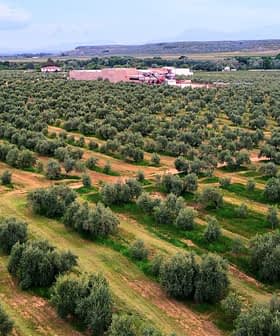What 485 Million Years of Climate History Tell Us About Today's Crisis
New research finds that Earth’s average temperature has changed more drastically in the past than originally thought, but the current rate remains uniquely perilous.
 Patagonia, Argentina
Patagonia, Argentina New research published in Science reveals that fluctuations in Earth’s temperature and atmospheric carbon dioxide levels have been occurring for nearly half a billion years, with a study mapping the variations in Earth’s temperature over time using fossilized shells and organic matter. The study found a consistent link between temperature shifts and atmospheric carbon dioxide levels, emphasizing the urgent need for action to address the current rise in global temperatures due to human activities.
New research published in Science has found that co-occurrences of rises in Earth’s average temperature and high levels of atmospheric carbon dioxide (CO2) are not exclusive to the modern era but go back nearly half a billion years in the planet’s history.
In a landmark study, researchers from American and British universities and the Smithsonian National Museum of Natural History looked into the past to map the variations in Earth’s temperature.
This research illustrates clearly that carbon dioxide is the dominant control on global temperatures across geological time. When CO2 is low, the temperature is cold; when CO2 is high, the temperature is warm.
The researchers collected over 150,000 temperature estimates from fossilized shells and organic matter and combined them with 850 climatic model simulations developed by the University of Bristol in the United Kingdom.
Then, they used a method known as data assimilation, which statistically integrates geological data with climatic models, to construct a global mean surface temperature curve that depicted in detail the fluctuations of Earth’s temperature over the past 485 million years.
See Also:May Marked Another Record-Breaking Year for HeatThe scientists noted that the availability of old rocks and fossils with preserved temperature indicators limited their ability to go back in time.
The curve revealed a consistent link between temperature shifts and atmospheric carbon dioxide, a long-lived greenhouse gas. Periods of extreme heat and increased levels of CO2 were often aligned.
“We found that carbon dioxide and temperature are not only really closely related but related in the same way across 485 million years,” said paleoclimatologist and co-author of the study Jessica Tierney from the University of Arizona.
“This research illustrates clearly that carbon dioxide is the dominant control on global temperatures across geological time,” she added. “When CO2 is low, the temperature is cold; when CO2 is high, the temperature is warm.”
The study also found that the Earth’s surface temperature has varied more over time than previously thought, from 11 ºC to 36 ºC compared to 14 ºC to 26 ºC as shown by previous simulations, particularly during the Phanerozoic eon.
The Phanerozoic is the most recent of the four eons in Earth’s geological history, stretching back almost 540 million years. During this period, life on Earth proliferated, diversified and populated new land.
Furthermore, the study indicated that the planet’s current average temperature of 15 ºC is lower than the average temperature during much of the Phanerozoic. However, the researchers pointed out that today’s lower average temperatures are not a reason for complacency.
“[It] has kept me awake at night,” said one of the researchers, Emily Judd. “I’m worried that climate deniers and climate skeptics and climate delayers will point to this and say, ‘See! We have nothing to worry about.’”
Judd added that the most important aspect of the climate crisis is how fast CO2 and temperature change.
Scientists have long warned that greenhouse gas emissions from human activities are warming Earth at an unprecedented rate, with some of the hottest years ever recorded on the planet occurring in the last ten years.
According to a 2023 study that reviewed atmospheric carbon dioxide levels and corresponding temperatures from 66 million years ago to the present day, the current levels of Earth’s atmospheric CO2 – around 420 parts per million – are almost 50 percent higher than the CO2 levels before the start of industrialization in the 18th century.
The result is a rise of about 1.2 ºC in the global average temperature compared to pre-industrial levels, close to the 1.5 ºC warming threshold the world’s nations have pledged not to cross.
“Regardless of exactly how many degrees the temperature changes, it’s clear we have already brought the planet into a range of conditions never seen by our species,” said Gabriel Bowen, one of the researchers. “It should make us stop and question what is the right path forward.”
Share this article









